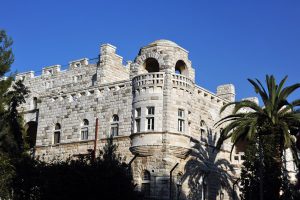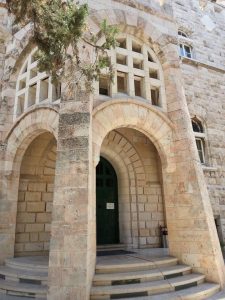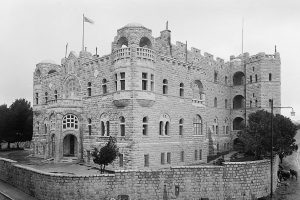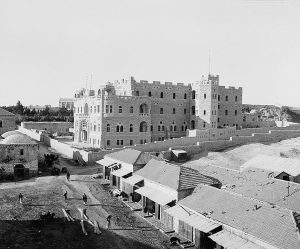A Gem in the History of Jerusalem
By Najla Shahwan
Jerusalem, with its magnificent panorama, has made a tremendous impression upon many foreign architects, firing their imaginations and inspiring them to build a spacious new city outside the Old City walls. Thus, Jerusalem can boast an amazing variety of public buildings, institutions, and private dwellings. Their various styles reflect the culture of specific groups of residents and particular periods in the city’s history. Built between the years 1868 and 1917, the building that is associated with Schmidt’s Girls College and today houses Saint Paul Guesthouse tells a particular story of the people who played a role in its creation.
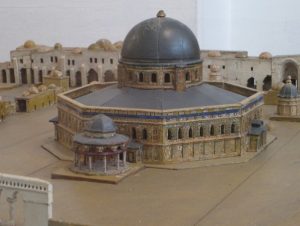
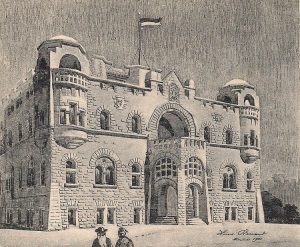
The college − established as a girls school in 1886, during the Ottoman Empire − in its early years was housed in the Old Hospice, located near Jaffa Gate. In 1889, at a meeting with the German Kaiser Wilhelm II during his travels through Palestine, the German Lazarist Father Friedrich Wilhelm Schmidt, who had taken on the administration of the school, suggested building new, larger, and more suitable accommodations to house pilgrims. Ten years later, with the Kaiser’s support, the German Association of the Holy Land acquired two parcels in the immediate vicinity of Damascus Gate. Here, Saint Paul Hospice was erected, designed by Henry Renard, the architect of the Archdiocese of Cologne. It opened in 1908, offering space for approximately 160 guests (leaving more room for the school in the Old Hospice), and quickly became the preferred place to stay for German pilgrims in Jerusalem.
In 1950, Schmidt’s Girls College moved into Paulus Haus and in 1965, into an immediately adjacent, newly constructed building. Paulus Haus then resumed its role as a pilgrim accommodation, and in 1989, along with Schmidt’s Girls College, was entrusted to the international community of the Sisters of the Congregation of Jesus.
Since its inception in 1899, the historical building of Saint Paul Guesthouse has served as a focal point for the dissemination of culture and education in the very heart of Jerusalem – an area of continual and dynamic urban, economic, and cultural development.
Paulus Haus has been preserved with its original layout, and to this day, it contains the furniture that was donated at the time of Kaiser Wilhelm II. In 1990, the German Association of the Holy Land opened a museum in the basement of the building. It displays architect Conrad Schick’s models of Jerusalem in various time periods, covering the city’s history from the Iron Age to the nineteenth century, which includes models of Al-Haram al-Sharif and Solomon’s Temple as well as items connected to the history of the association. The museum is open to the public every day except Sunday.
The rooftop terrace offers a magnificent view over the Old City of Jerusalem that reaches from the Mount of Olives to Al-Aqsa Compound and the Church of the Holy Sepulchre.
Najla M. Shahwan is a Palestinian author and journalist from Jerusalem.

